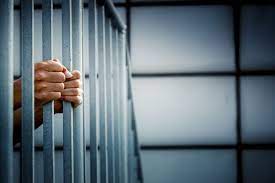The Penitentiary Regime (also called Progressivity) is the process that a person must go through in compliance with the custodial sentence that the judicial authority has imposed on him. It is structured on the basis of the balance between your rights and duties and those of the hosts as a whole.
At the same time, it promotes order, the security of coexistence and the possibility that they can access education at the compulsory educational levels; adequate and timely attention to psychophysical and spiritual needs; the maintenance of family ties and the development of labor, social, cultural and recreational activities in force in the establishments of the Federal Penitentiary Service.
The Penitentiary Regime consists of a progressive system, divided into four phases or periods through which one must advance —progress— due to the situation of being sentenced. Said progress will depend on the fulfillment of the objectives that the penitentiary authority establishes for each one of the phases or periods of the aforementioned regime.
This compliance, in addition, will imply benefits consisting of the attenuation of their detention regime and the possibility of accelerating access to temporary exits and semi-liberty.
Incorporation into the Penitentiary Regime occurs once the sentence is communicated to the penitentiary establishment. The sentencing court must send to the Unit or Complex and to the Enforcement Court the testimony (copy) of the sentence and the computation of the detention once it has been finalized.
If the person has not been sentenced, to join the progressive system they can opt for the Voluntary Early Execution Regime (R.E.A.V.) as long as they meet the predetermined requirements.
1. Observation Period:
It consists of the medical-psychological-social study of your person and the formulation of the criminological diagnosis and prognosis. The Criminological Service will interview you and prepare your Criminological History where everything related to your passage through the prison progressivity system will be recorded.
The history will also record the dates on which, after complying with the legal and regulatory requirements, you will be able to access: trial period; transitory departures and semi-freedom; conditional freedom; assisted release; pre-release program, and release due to exhaustion of sentence.
This stage will determine in which phase or period of treatment the convicted person will be incorporated, and the establishment, section or group to which he should be assigned.
2. Treatment Period, in turn divided into three phases:
- Socialization: in this period, the Correctional Council must consider the recommendations made by the Criminological Service for their prison treatment. With these elements, within 15 days the Correctional Council must set the treatment guidelines: psychophysical health; vocational training and education; work activity; educational, cultural and recreational activities; family and social relationships; and special aspects of your case. The Correctional Council itself will inform you verbally about your treatment, will listen to your concerns and will try to motivate your active participation.
- Consolidation: it begins once the inmate has achieved the objectives of the previous phase, evidenced by the daily acceptance of guidelines and social norms and the possibility of assigning activities with fewer control measures. Incorporation in this phase implies a reduction in the control exercised over the inmate and in the possibility of changing the section or group within the establishment, or transfer to another specific one for the new phase. The requirements are established in article 20 of the Basic Modalities Regulation.
- Confidence: depending on the characteristics of each establishment, this phase will consist of accommodation in a differentiated sector; greater self-determination; expansion of their responsible participation in activities; visit and recreation in an environment according to the progress achieved in your treatment program; moderate supervision. These requirements are established in article 23 of the Basic Modalities Regulation.
3. Trial Period:
Self-government methods are systematically employed here. Successively implies: their incorporation into an open establishment or independent section that is based on the principle of self-discipline; the possibility of obtaining transitory exits; incorporation into the semi-liberty regime. These requirements are established in article 27 of the Basic Modalities Regulation and article 56 bis of Law No. 24,660 (Text incorporated by the reform of Law No. 25,948).
Temporary departures: allows you to leave the establishment for 12, 24, and exceptionally 72 hours, under conditions set by the Enforcement Judge. Its objective may be aimed at improving family or social ties, carrying out educational activities or participating in pre-release programs.
Incorporation to the Semilibertad Regime: allows you to work outside the establishment without continuous supervision, under the obligation to return once the working day is over. It is thus established by article 34 of the Basic Modalities Regulation.
4. Parole:
He regains his freedom after having served part of the sentence (two thirds), with certain conditions. It is granted by the Execution Judge if the legal conditions established in article 13 of the Penal Code are met.



